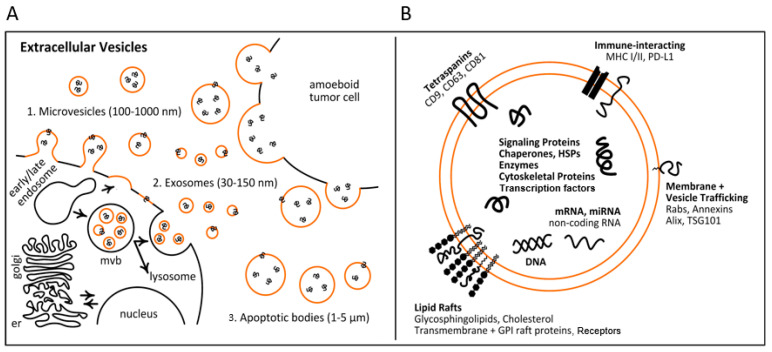Figure 1.
Biogenesis and composition of extracellular vesicles (EVs). (A) EVs represent diverse forms of lipid-bound nanoparticles that range from exosomes (30–150 nm) and microvesicles (100–1000 μm) to apoptotic bodies (1–5 μm). EV biogenesis starts with early endosomes formed by the invagination of the plasma membrane. Early endosomes either return the cargo as recycling endosomes to the plasma membrane, or transform into multivesicular bodies (MVBs). MVBs are forced to fuse and degrade with lysosomes, or go into the plasma membrane, and intraluminal vesicles are secreted as exosomes. (B) Molecular composition of EVs. EVs contain a variety of cellular components, including nucleic acids, signaling proteins, chaperones, HSP proteins, enzymes and transcription factors as cargoes, and lipid rafts, tetraspanins, immune-interacting molecules and vesicle-trafficking proteins as surface proteins.

